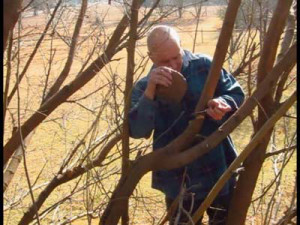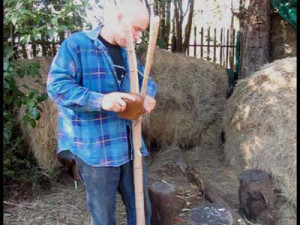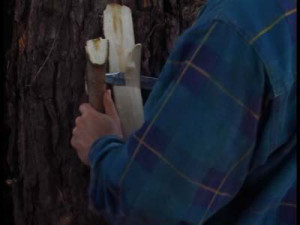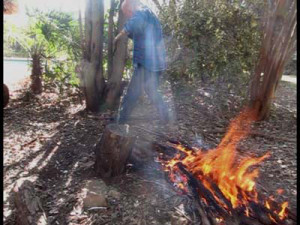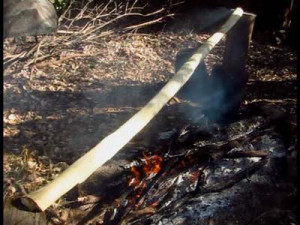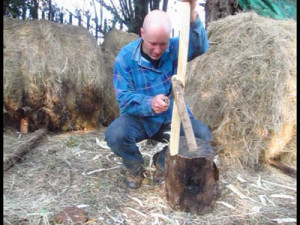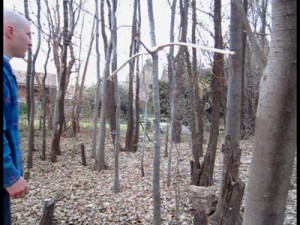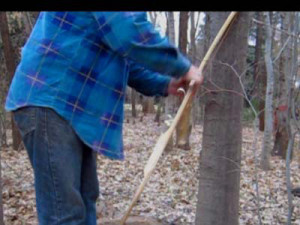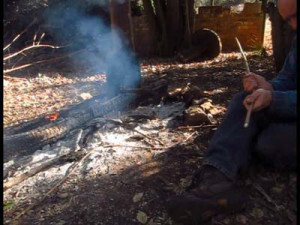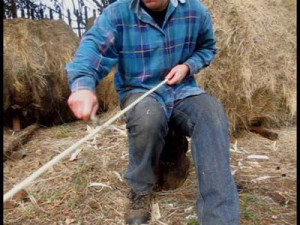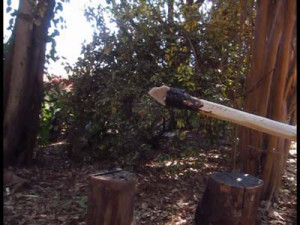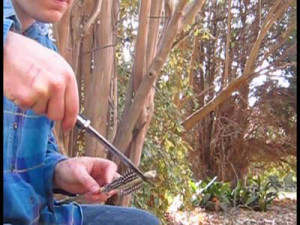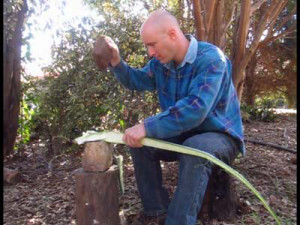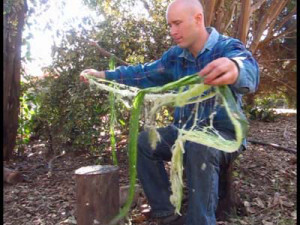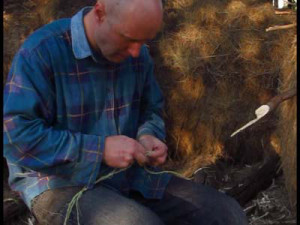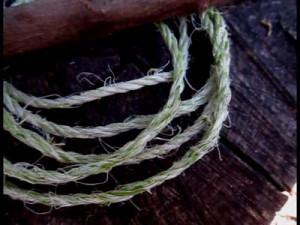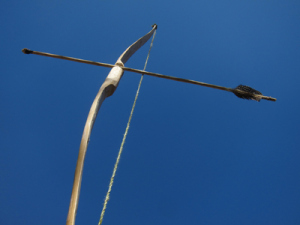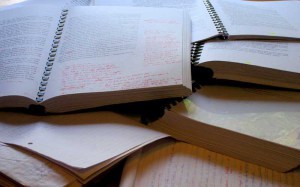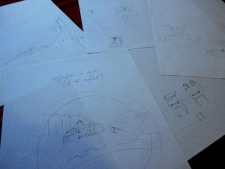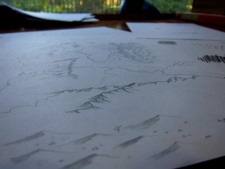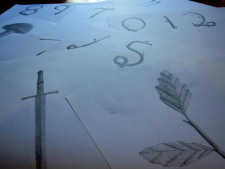Jonathan Renshaw's Blog, page 3
June 10, 2015
Torval’s bow, the video
The post Torval’s bow, the video appeared first on Jonathan Renshaw.
May 17, 2015
The Wakening, Book 2
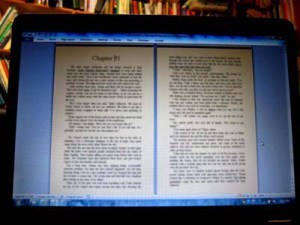 The sequel to Dawn of Wonder is underway. The rough draft is finished and the first revision is a few chapters in. Having done all this once before, I hope that the second time around things will be quicker.
The sequel to Dawn of Wonder is underway. The rough draft is finished and the first revision is a few chapters in. Having done all this once before, I hope that the second time around things will be quicker.
The sequel is rather different – faster paced, more urgent. Book 3 and 4 are in the wings with many of the key scenes already laid out, and with them, the scale is going to increase significantly and the mysteries will lead far deeper. I’m itching to get into them and follow the threads that were introduced earlier. The scenes in the third book are begging to be made huge. That book tugs at my thoughts constantly, like it’s jealous of the time being given to book 2. For me, it’s like trying to manage a couple of kids jostling for attention – not unlike being a teacher again.
Thank you to everyone who has bought the debut, reviewed it, or mailed me. I really appreciate all the support. Without you getting behind the first book, it would be very difficult to complete the second. As it is, the progress is looking good. I hope you’ll find it worth the wait.
The post The Wakening, Book 2 appeared first on Jonathan Renshaw.
The Wakening, Book 2
The sequel to Dawn of Wonder is underway. Having done all this once before, I hope that the second time around things will be quicker, but I have a feeling this could be a longer book than the first, which will naturally push the release back again. A longer book means a longer wait, but a more satisfying read.
The sequel has many similarities to the first book, but also some marked differences. There is more urgency to this part of the tale, as anyone who as read the first book would imagine. It was extremely difficult to keep myself from writing this book as the first, with a few chapters to summarise the events of book 1. But then there would have been little space to explore that childhood sense of wonder, that secret place inside that some of us remember well and others only vaguely. I also wanted a big foundation for the relationships, the skills, and the hopes that drive the sequel. Book 2 wants to be a furious expression of some of the deepest cries of the heart, at the same time as a sturdy adventure.
Book 3 is in the wings. With this one, the scale is going to increase significantly, and the mysteries will lead far deeper. There’s a great deal to explore, and I’m itching to pursue the threads that were introduced earlier. That book tugs at my thoughts constantly, like it’s jealous of the time being given to book 2. For me, it’s like trying to manage a couple of kids jostling for attention – not unlike being a teacher again.
Thank you to everyone who has bought the debut. I really appreciate all the support. Without you getting behind the first book, it would be very difficult to complete the second. As it is, the sequel looks to be shaping up well. I hope you’ll find it worth the wait.
May 4, 2015
Torval’s bow
Sometimes you read things in novels that you know are just impossible, especially when you have some experience in that field. It spoils the story when you realise the author has taken a chance and spouted nonsense. After completing the chapter on Torval’s bow (the bow made with only a hunting knife) I wondered if I had just delivered a few thousand words of the aforesaid nonsense. I’d made bows and strings from natural materials, but I’d always used a range of tools, so I decided to put the tools aside and try out the technique.
It’s all on video and I’ll post it as soon as I’ve had a chance to put it together, but here are a few shots of the process. The descriptions in the book (chapter 28) will line up roughly with the pics.
Bow
Arrow
String
Result
To be entirely honest, the string eventually broke and the bow warped after a few weeks, but it was able to shoot pretty well for a time, certainly enough for a survival bow.
The post Torval’s bow appeared first on Jonathan Renshaw.
April 14, 2015
The Music in the Story
I’ve found that the two expressions – music and story – seem to flow from each other and inspire each other. They move the emotions in different ways, but to equal depths. Given that relationship, I thought it might be nice for readers to be able to feel something of what I felt while writing.
Music is a passion for me, so it was only natural that I started composing scenescape-type pieces at about the same time I began with the world of the books.
In the Whisper is a track I released a few years back under the name Sparrowland. In this one I was trying to capture the tingling crispness of imagination and a sense of wonder.
http://www.jrenshaw.com/jrswhr/wp-content/uploads/2015/04/in-the-whisper.mp3
Minstrels, I think explains itself. Here I was picturing a group of minstrels travelling through midland hills, forests, rivers and farms … the Mistyvales, really. As with many tracks, you’ll notice Celtic and African influences, which to me are among the freshest, wildest and most captivating strains of music.
http://www.jrenshaw.com/jrswhr/wp-content/uploads/2015/04/minstrels.mp3
The Fairground – one with vocals. There’s something magical about fairs. As a boy I used to visit the local town fair and a bigger one in a nearby city. Wandering around the stalls and stables in the lonely hours always left me so full of feelings I could never quite comprehend which only made them more captivating. It was these memories that inspired this song as well as the chapters devoted to the autumn festival – among my favourite to write.
http://www.jrenshaw.com/jrswhr/wp-content/uploads/2015/04/the-fairground.mp3
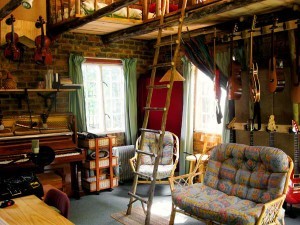 I’ve always liked the idea of stories set to music – as seen in the book with the northern rilloms. This was inspired largely by my own dabbling. The Weaver is one of these experiments – something of a fable set to music. It was a demo I knocked together during an idle day in the studio and I’d hoped to come back and trim the rough edges, but the files were lost, so this is all there’s likely to be for a while. Don’t judge it too harshly.
I’ve always liked the idea of stories set to music – as seen in the book with the northern rilloms. This was inspired largely by my own dabbling. The Weaver is one of these experiments – something of a fable set to music. It was a demo I knocked together during an idle day in the studio and I’d hoped to come back and trim the rough edges, but the files were lost, so this is all there’s likely to be for a while. Don’t judge it too harshly.
http://www.jrenshaw.com/jrswhr/wp-content/uploads/2015/04/The-Weaver.mp3
This is another demo – files lost on the same drive as The Weaver’s. I originally wrote it for a good friend, Simon Painter, who was putting together a dance show that never emerged (though Simon has subsequently launched several other enormously successful shows and is now a widely recognised name in the business). I wrote the music and Simon arranged most of the rhythm section. I’ll never forget him laughing his head off as I did take after take in the studio trying to get the Irish whistle to sound the low D. These whistles are big and they have a beautiful, rich tone, but you need pretty sizeable hands to reach those low stops and I almost dislocated my knuckles in the process.
With this piece, Folk Dance, the mood is very much what I’d imagined while writing the scene where the apprentices join in the dances during the festival.
http://www.jrenshaw.com/jrswhr/wp-content/uploads/2015/04/Folk-dance.mp3
The Fool of Time – based on a magical old poem by Thomas S. Jones. I’ve always loved words that paint, so when I read that first line, “Across the fields of yesterday,” the images began to appear and beg to be put to music. There’s a deep melancholy to the original poem, but I saw in it the opportunity for hope as real as the despair behind the original words.
http://www.jrenshaw.com/jrswhr/wp-content/uploads/2015/04/The-Fool-of-Time5.mp3
There are one or two more in various stages of completion, including my favourite. If you nag me I might be encouraged to nudge them up the priority list.
April 13, 2015
Language Invention
A few people mailed, asking how one approaches the business of creating languages, so I decided to share something of my experiences. Firstly, I should point out that while it would have been fun to construct a few complete languages with functional vocabs, it would also have been as useful as varnishing the inside of a couch. I know people have constructed complete languages, and I have only the greatest respect for them, but that’s a monstrous investment that will be largely unappreciated. That’s not to say, however, that I think writers should have nothing under the visible part of their invented-language icebergs, that they should merely close their eyes and launch into babble and gabble.
Here’s some of what I discovered while working on fantasy languages. The most important thing – the languages need to sound real and believable at the same time as sounding otherworldly. It’s a fine balance. Too close to a known language and the fiction is spoiled; too original and they don’t sound like languages at all, just a heap of silly noises. They also need to be distinct from each other, and each occurrence of the language must have the same ring to it. A reader must be able to say, “Oh, yes, that’s what Gellarac sounds like.” The next big consideration is that the grammar rules should vary from one language to the next, while being internally consistent.
 I found the most effective way to do all of this was to learn basic grammar and phrases in several languages using language podcasts. I’d plug headphones into the iPod while exercising and go through the notes at the end. After about two or three months of this, I had a far broader perspective on believable language tones and sentence constructions. The next thing I did was define the sound and basic grammar of the language. The grammar notes weren’t comprehensive. All that was needed was to choose a few noticeable ways in which the languages would be different from English (which is used as Thirnish in my book), and from each other. For the sounds, I decided to blend and modify the tones of two or three existing languages in such a way that they would not remind anyone of the original languages, but would still lend hints of familiarity and therefore believability to the new language.
I found the most effective way to do all of this was to learn basic grammar and phrases in several languages using language podcasts. I’d plug headphones into the iPod while exercising and go through the notes at the end. After about two or three months of this, I had a far broader perspective on believable language tones and sentence constructions. The next thing I did was define the sound and basic grammar of the language. The grammar notes weren’t comprehensive. All that was needed was to choose a few noticeable ways in which the languages would be different from English (which is used as Thirnish in my book), and from each other. For the sounds, I decided to blend and modify the tones of two or three existing languages in such a way that they would not remind anyone of the original languages, but would still lend hints of familiarity and therefore believability to the new language.
It might seem like a lot of work for only a few sentences scattered here and there, but it’s details like these that, I find, either consolidate or spoil the sense of realness. The curious thing about an imaginative world is that the more believable it is, the more it draws you out of your reality into its own.
Language invention
 A few people have asked how I approached the business of creating the languages encountered in the book, so I decided to share something of my experiences here. Firstly, I should point out that while it would have been fun to construct a few complete languages with functional vocabs, it would also have been as useful as varnishing the inside of a couch. I know it’s been done, and I have only the greatest respect for those who did it, but I have often questioned the cost vs the return. That’s not to say, however, that I think that writers should have nothing under the visible part of their invented-language icebergs, that they should merely close their eyes and launch into babble and gabble.
A few people have asked how I approached the business of creating the languages encountered in the book, so I decided to share something of my experiences here. Firstly, I should point out that while it would have been fun to construct a few complete languages with functional vocabs, it would also have been as useful as varnishing the inside of a couch. I know it’s been done, and I have only the greatest respect for those who did it, but I have often questioned the cost vs the return. That’s not to say, however, that I think that writers should have nothing under the visible part of their invented-language icebergs, that they should merely close their eyes and launch into babble and gabble.
Here’s some of what I discovered while working on the languages. The most important thing – the languages need to sound real and believable at the same time as sounding otherworldly. It’s a fine balance. Too close to a known language and the fiction is spoiled; too original and they don’t sound like languages at all, just a heap of silly noises. They also need to be distinct from each other, and each occurrence of the language must have the same ring to it. A reader must be able to say, “Oh, yes, that’s what Gellarac sounds like.” The next big consideration is that the grammar rules should vary from one language to the next and be consistent within each language.
I found the most effective way to do all of this was to learn basic grammar and phrases in several languages using language podcasts. I’d plug headphones into the iPod while exercising and go through the notes at the end. After about two or three months of this I had a far broader perspective on believable language tones and sentence constructions. The next thing I did was define the sound and basic grammar of the language. The grammar notes weren’t comprehensive. All that was needed was to choose a few noticeable ways in which the languages would be different from English (which is used as Thirnish in the book) and from each other. For the sounds, I decided to blend and modify the tones of two or three existing languages in such a way that they would not remind anyone of the original languages, but would still lend hints of familiarity and therefore believability to the new language.
It might seem like a lot of work for only a few sentences scattered here and there, but it’s details like these that I’ve always found to either consolidate or spoil the sense of realness. The curious thing about an imaginative world is that the more believable it is, the more it draws you out of your reality into its own.
The post Language invention appeared first on Jonathan Renshaw.
A Dozen Years Later
About ten years of part-time and two years of full-time writing are done. Dawn of Wonder, book 1 of the series The Wakening, is ready to see the light – at last! Over the years, the entire plot and most of the characters were discarded and reinvented numerous times, but with every reinvention the landscapes and cultures grew a little broader. About two years ago I left my teaching job and started everything from scratch. After completing the rough draft, I did six or seven revisions, as well as a rough for the second book and some ideas for the third.
The artwork was a project on its own. I had specific ideas for the cover, map, chapter headings and internal sketches.
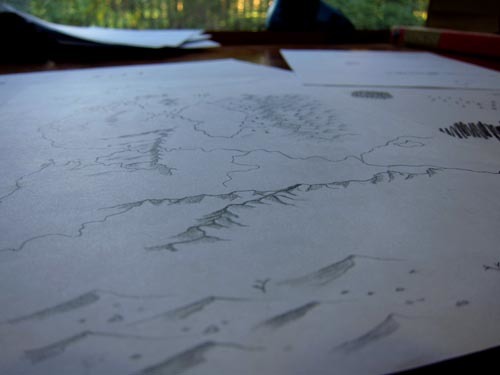
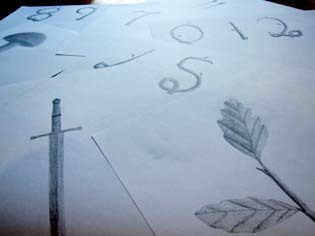
As an artist, I’m somewhere between not-much-use and appalling, so it took a good long time to hack together the map and chapter headings (leaning very heavily on photoshop and corel), but when it came to the internal sketches and cover, help was needed. Richard Allen spent months putting up with my exceptional fussiness, and delivered artwork that has impressed everyone who has seen it.
I think Dawn of Wonder has been groomed about as much as any book can ask for, and I’m very excited to open the door and let it out.
A dozen years later
About ten years of part-time and two years of full-time writing are done. Dawn of Wonder, book 1 of the series The Wakening, is ready to see the light – at last! Over the years, the entire plot and most of the characters were discarded and reinvented numerous times, but with every reinvention the landscapes and cultures grew a little broader. About two years ago I left my teaching job and started everything from scratch. After completing the rough draft, I did seven or eight revisions, as well as a rough for the second book and a number of scenes for the third. With much of the groundwork prepared, the subsequent books should emerge a lot more quickly than the first.
The artwork was a project on its own. I had very specific ideas for the cover, map, chapter headings and internal sketches.
As an artist, I’m somewhere between not much use and appalling, so it took a good long time to hack together the map and chapter headings (leaning very heavily on photoshop and Corel), but when it came to the internal sketches and cover, help was needed. Richard Allen spent months putting up with my exceptional fussiness and delivered artwork that has impressed everyone who has seen it.
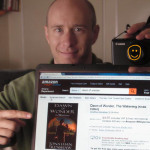 I think Dawn of Wonder has been groomed about as much as any book can ask for, and I’m very excited to open the door and let it out.
I think Dawn of Wonder has been groomed about as much as any book can ask for, and I’m very excited to open the door and let it out.
The post A dozen years later appeared first on Jonathan Renshaw.

